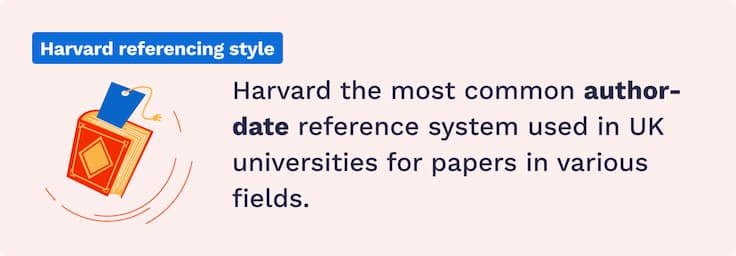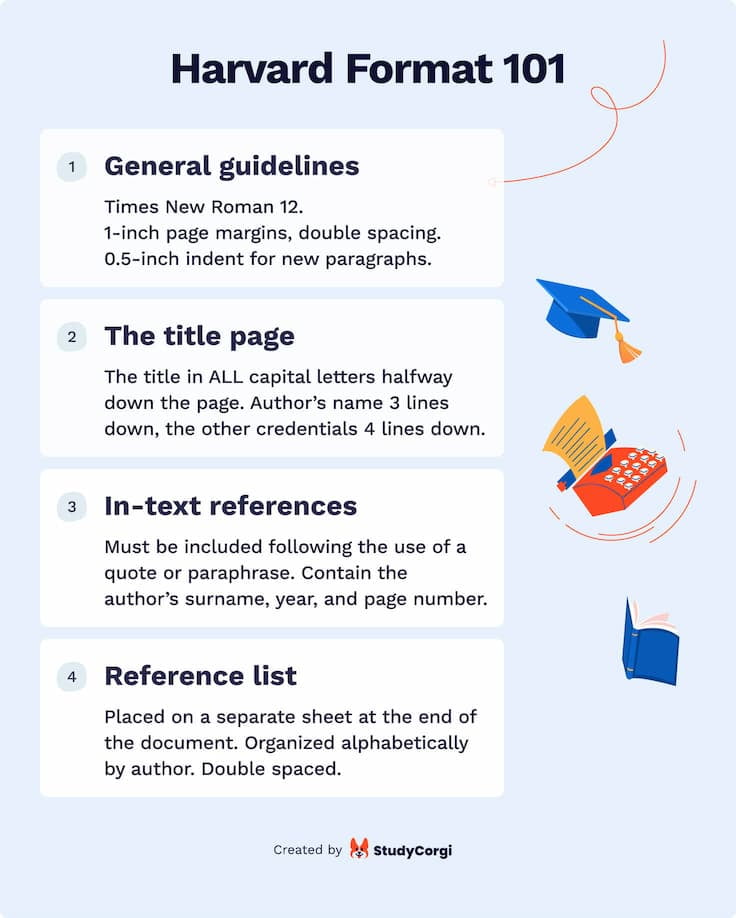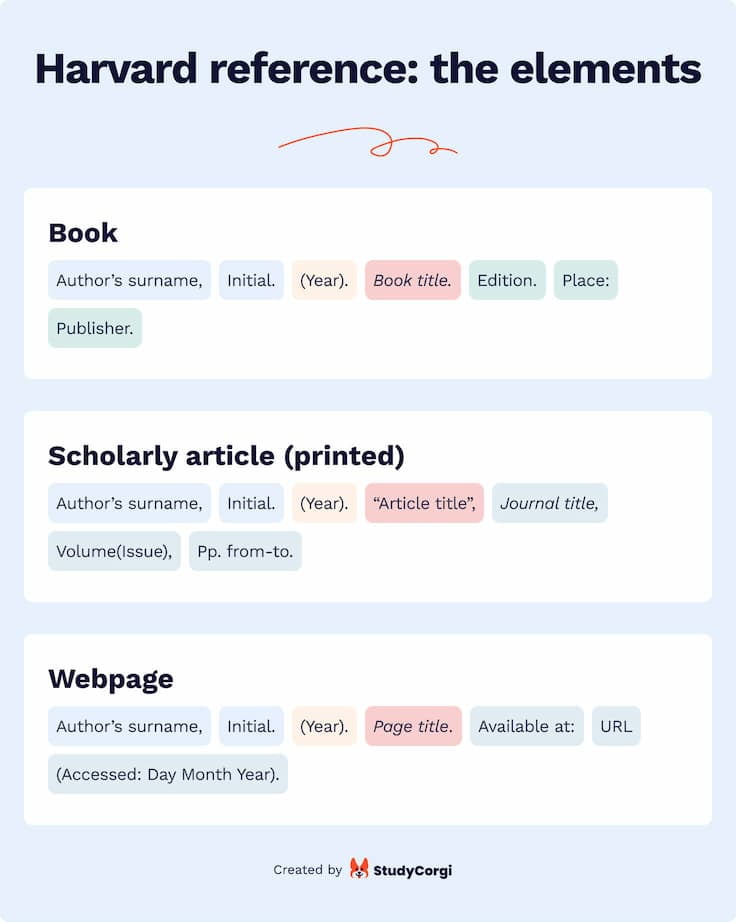🛠️ Harvard Citation Machine - How to Use It?
Take the 4 steps below to use the tool:
- Choose the type of source you wish to cite. It can be a website, a book, an article, a chapter in edited books, or a social media post.
- Provide the necessary information in the search bar. Users can paste URLs, titles, DOI, or ISBN information.
- Add the information manually if there are any difficulties with your search.
- Click “Cite” once you’re done.
Note that you can save bibliographical lists and name them. For example, “Frankenstein essay” or “Linguistics project.” Additionally, you can copy references and enable the “in-text citation” option. Users may even use the quoting machine to download bibliographies in Word format.
🔥 Harvard Reference Generator Benefits
There are 4 key benefits of using our citation machine:
| 100% Intuitive | Our tool knows what you want from a citation. All users have to do is select a style and add the necessary information. You can use prompts to guide you through this process if it's your first time using our platform. |
| 100% Accurate | We’ve spent considerable time and effort developing and fine-tuning this tool. It generates quotes that strictly follow the current versions of modern quotation styles. |
| 100% Quick | You can quickly search for citations by title, DOI, and ISBN. They can be used to find suitable sources automatically. You can also enter requests manually if you fail to find the necessary sources based on their characteristics. |
| 100% Ad-free | Our platform is entirely free of intrusive banners and video ads. You won’t have to pay to disable the ads. |
📖 Harvard Format 101
Harvard style is one of the most common author-date reference systems among students, writers, and researchers. It is also the most common style used in UK universities.

It was first used by Edward Laurens Mark, Harvard University's professor of zoology, in the 1880s and soon became widely used in the academic community.
Now Harvard referencing format is used for publications in linguistics and literature, as well as for social and natural sciences.
Unlike many reference styles, there are not one but several versions of the Harvard format. The differences mainly concern the use of punctuation, making it important for writers to stay consistent in their texts.
It is a parenthetical referencing system with 2 main elements:
- In-text citations that indicate where a writer took a quote or paraphrased the text from,
- A reference list that provides more details on each literary source.
Some disciplines also require you to develop a bibliography, which should include all the materials you've consulted for your research, even if you don't refer to them in the text.
The Harvard style stands out because many scholars find this format more accessible to readers and beneficial for the whole academic community. With the help of our free referencing machine Harvard style, you can also make your writing look more scientific and trustworthy.
General Guidelines
Usually, a paper that follows the Harvard referencing style has these format requirements:
- Margins on all sides are 2.5cm or 1 inch.
- The possible fonts are Arial or Times New Roman, 12 pt, with double-spacing.
- The text is left-aligned, with the first sentence of each paragraph indented by 0.5 inches.
- A title page is center-aligned.
- Subheadings are left-aligned and in a sentence case.

Harvard Title Page
Note that Harvard style requires a very specific title page.
What does it look like?
The work's title should be written in all capital letters and located about halfway down the page. About three lines down, follow the name of the author. And finally, move four lines down; there's a place for the class's name and the professor's name. The following line is the school, the city and state where it is located, and the date.
If you need to quickly prepare a Harvard title page, check out our free online tool.
Harvard Header
If your requirement list also contains the header, make sure it includes a short version of the title and is followed by the page number.
For example:
If your full research title is "Modern technologies for radioactive waste disposal," the possible header will be "Radioactive waste 1", where 1 stands for a page number.
Even though we've covered the main features of the Harvard format, it's still important to consult with your university of professor's requirements list. As we said, there are different versions of the Harvard style, so double-checking is always better.
💬 Harvard Citation Format
The below sections explain how Harvard in-text citations and references should be formatted.
Generating Harvard In-Text Citations
An in-text citation is a short acknowledgment a writer includes in the text when they quote or take information from another writer.
In-text citations are important because they:
- Present a source to readers so they can check the information themselves.
- Help comment on other researchers' opinions without breaching intellectual property laws.
The general rule for Harvard in-text citations is that they appear in brackets and consist of:
- The author's last name,
- Publication year,
- Page number if necessary.
In-text citations should include a page number if you quote directly from the source or paraphrase specific sentences. However, you don't need to mention a page number if you comment on the ideas that recur throughout the text.
There are two ways you can present in-text citations:
- Information-focused format that places the citation at the end of a sentence.
- Author-focused format that mentions the author's name and date as part of the text without repeating them in the parenthetical citation.
The choice between these two formats depends on whether you want to emphasize the writing's author or the topic. Overall, you can use both information-focused and author-focused formats in one writing.
Consider the below examples of Harvard in-text citations.
One Author
Here’s an example of a Harvard in-text citation of a source with one author:
(Johnson, 2018)
Two Authors
Here’s an example of a Harvard in-text citation of a source with two authors:
(Johnson and Miller, 2018)
Multiple Authors
Here’s an example of a Harvard in-text citation of a source with three or more authors:
(Johnson et al., 2018)
No Date
Don't worry if you cannot find the exact year of publication. Instead, you can simply add "no date" to format your citation.
(Johnson, no date)
No Author
If it's unclear who the author of the writing is, you can either substitute it with the name of the institution responsible for the publication or the source's title.
(The New England Journal of Medicine, 2018)
or
(Lecture on radioactive waste, 2018)
Multiple sources cited at one point
To cite multiple sources in a sentence, you can put them all in brackets, separated by a semi-colon.
(Johnson, 2018; Smith et al., 2020; Miller, 1998)
Generating Harvard Reference List
A reference list collects all the sources cited in the text, including books, articles, reports, and web documents. The purpose of the reference list is to help readers find the sources you used for further exploration.
Harvard Reference List Requirements
- Usually, it appears at the end of the document but before any appendices.
- It is presented by the title References, which should be centered.
- All the sources listed should be organized in an alphabetical sequence by the author's surname or by the first word from the title if there's no author.
- Each reference should start with a new line.
- Dictionaries and encyclopedias are cited in the text only and are not included in the reference list.
- Only capitalize the first letter of the first words and the proper pronouns in the titles from the reference list.
Often students confuse a reference list with another part of academic writing, a bibliography. While the reference list collects only the sources you cite in your work, the bibliography additionally includes all the background reading. Different subjects may require a reference list, a bibliography, or both. It is better to check with your professor first.
Reference list entries always start with:
- The author's last name and initial,
- The date of publication,
- The title.
The other information needed may vary depending on the source type.

Book
If you need to add a book to your reference list, you can mention the whole writing, a chapter, or a certain edition.
Kastan, D.S. (2001). Shakespeare and the Book. Cambridge University Press.
Kastan, D.S. (2001). Shakespeare and the Book. Cambridge University Press, pp. 1–14.
Kastan, D.S. (2001). Shakespeare and the Book. 2nd ed. Cambridge University Press.
Article
In your reference list, you can mention both scholarly articles you access online and those available in print. Remember to mention the volume and the page range that show where the article is located in the journal.
Richardson, C. (2010). Shakespeare and Material Culture. Literature Compass, 7(6), pp.424–438.
Website
You can use the whole web pages, online blogs, and even social media posts for a reference list. The main requirement here is to add the website's URL.
Wikipedia Contributors. "William Shakespeare." Wikipedia, Wikimedia Foundation, 7 Dec. 2018, en.wikipedia.org/wiki/William_Shakespeare.
Multimedia
You can cite an image or a video according to how you viewed them. If you took an image from a book, just cite the book. And videos found online are cited similarly to other web sources.
Dali, S. (1958) Madonna. [Oil on canvas]. Tate Gallery, London.
www.youtube.com. Shakespeare is everywhere | Christopher Gaze | TEDxVancouver - YouTube. Available at: https://www.youtube.com/watch?v=LsESSyMnwmU.
🏆 Harvard Citation Style - Most Popular Versions
Many students might find it challenging that Harvard's citation style doesn't have one accepted to follow.
In this case, we recommend either checking your university requirements or choosing one of 2 most common variations:
- "Cite it right: guide to Harvard referencing style" from the University of Limerick.
- "Harvard Citing and Referencing Style" from Imperial College, London.
The key to a well-crafted academic paper lies in consistency. If you've chosen one of these Harvard-style versions, make sure you follow it throughout your whole writing. Moreover, remember to double-check that your in-text citations and reference list follow the requirements of one style.
Thank you for reading this Harvard format guideline! Note that we’ve also prepared similar tools and instructions for APA, Chicago AD, Chicago NB, MLA, and Turabian.
❓ Harvard Citation Machine FAQ
❓ What is Harvard citation style?
Harvard referencing style is a popular system of organizing literature sources and referring to them in an academic text. It uses references in two writing places: in the text and, in the end, in a reference list. In simple terms, each literary source that appears in the text must also be mentioned in the reference list, and vice versa.
❓ When is Harvard citation used?
Academics widely use the Harvard style for referencing in theses, articles, and research papers. It is the most common referencing style in UK universities, used by students, professors, and researchers in various fields of study. The purpose of the Harvard style is to comment on or quote any literary source without plagiarism.
❓ How to make a Harvard in-text citation?
In Harvard style, citations are put in brackets in the text. An in-text citation consists of the author's last name, publication date, and page number if you refer to a particular text fragment. You can always use our free Harvard citation machine to save time and effort.
❓ How to write references in Harvard format?
Harvard reference list should include all the cited sources in your work. In the Harvard System, the reference list is arranged in alphabetical order according to the author's surname or source title of the author is unknown. The types of reference list entries can vary and include books, articles, websites, and other forms of multimedia.